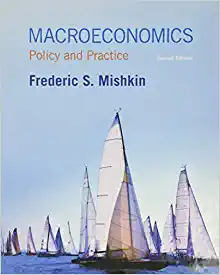Question
Australia and New Zealand can produce wool and milk using only labor. Each worker in New Zealand can produce 500 units of wool or 100
Australia and New Zealand can produce wool and milk using only labor. Each worker in New Zealand can produce 500 units of wool or 100 units of milk. Australian workers are 1.5 times as productive as New Zealand workers in wool and exactly as productive as New Zealand workers in milk. Assume that under autarky both countries produce both goods. Suppose there are 25 workers in Australia and 5 in New Zealand.
a. Under autarky, what is the relative price of wool in Australia? Which country has a comparative advantage in milk? Explain.
b. Suppose the countries open to free trade. What is the range of possible prices for milk? At the highest possible price in this range, describe production in each country. Do both countries gain from trade at this price? If so, explain. If not, which country doesn't gain?
c. Suppose Australia wants to change its comparative advantage. To do so, the country plans to tax production of one good, thereby reducing labor productivity in that industry. Which good does Australia need to tax in order to achieve this, and by how much does it need to reduce labor productivity in order to change the pattern of trade?
Step by Step Solution
There are 3 Steps involved in it
Step: 1

Get Instant Access to Expert-Tailored Solutions
See step-by-step solutions with expert insights and AI powered tools for academic success
Step: 2

Step: 3

Ace Your Homework with AI
Get the answers you need in no time with our AI-driven, step-by-step assistance
Get Started


